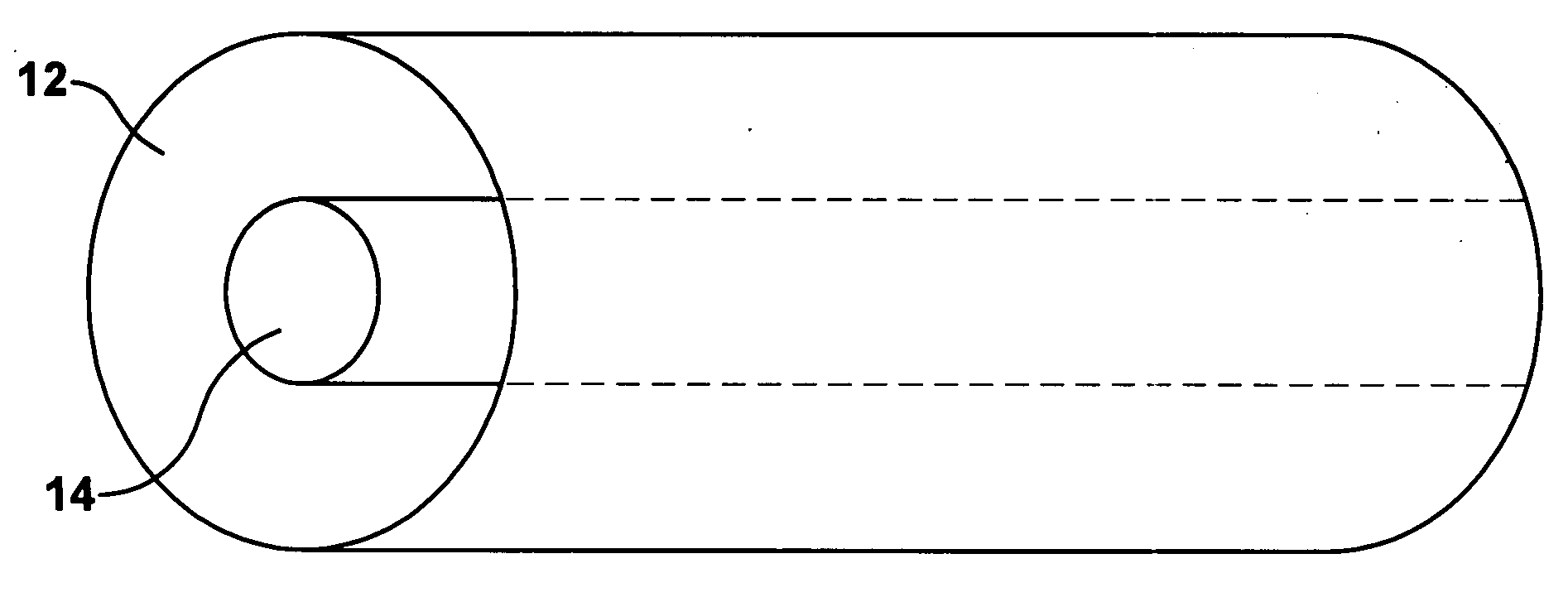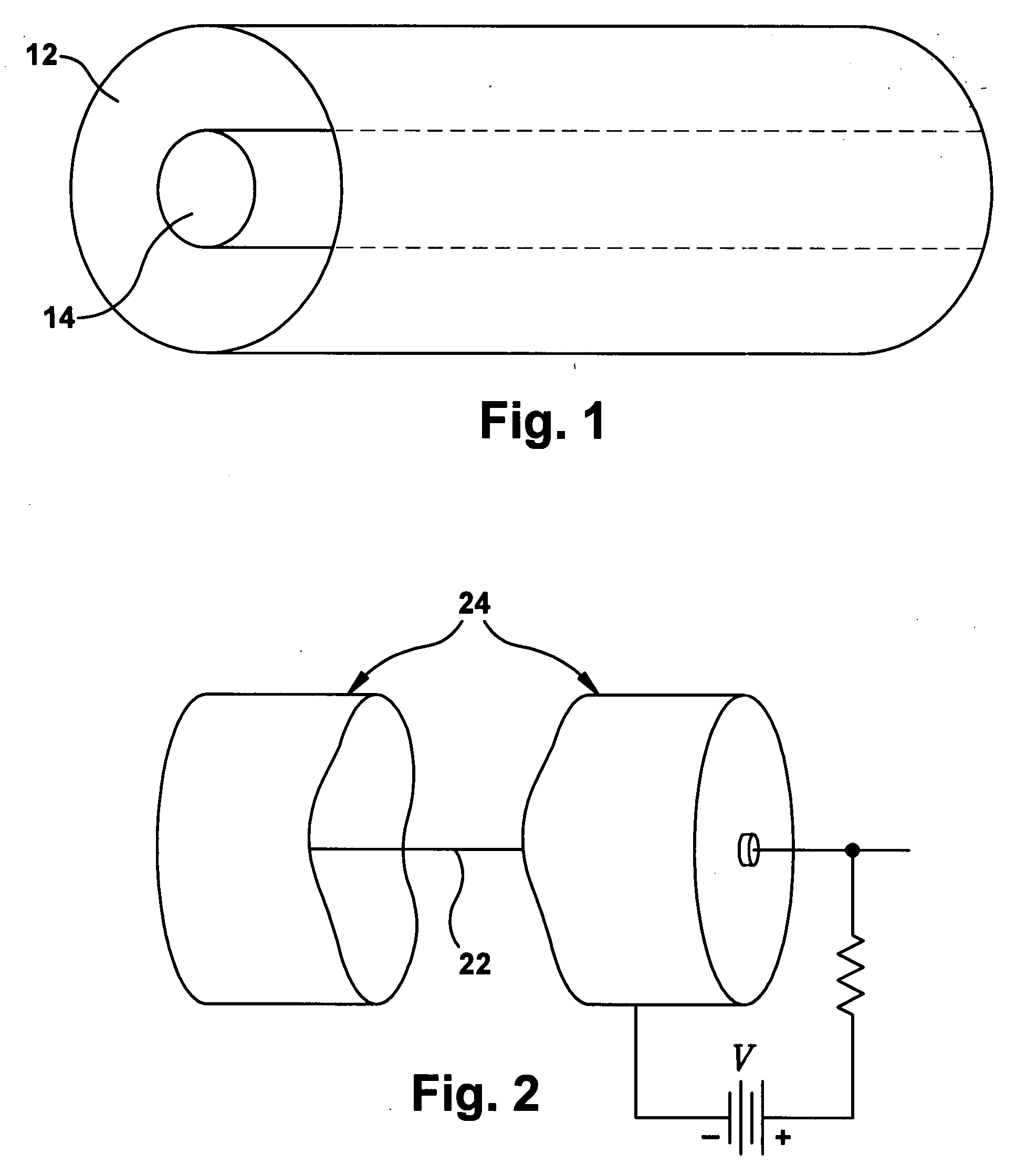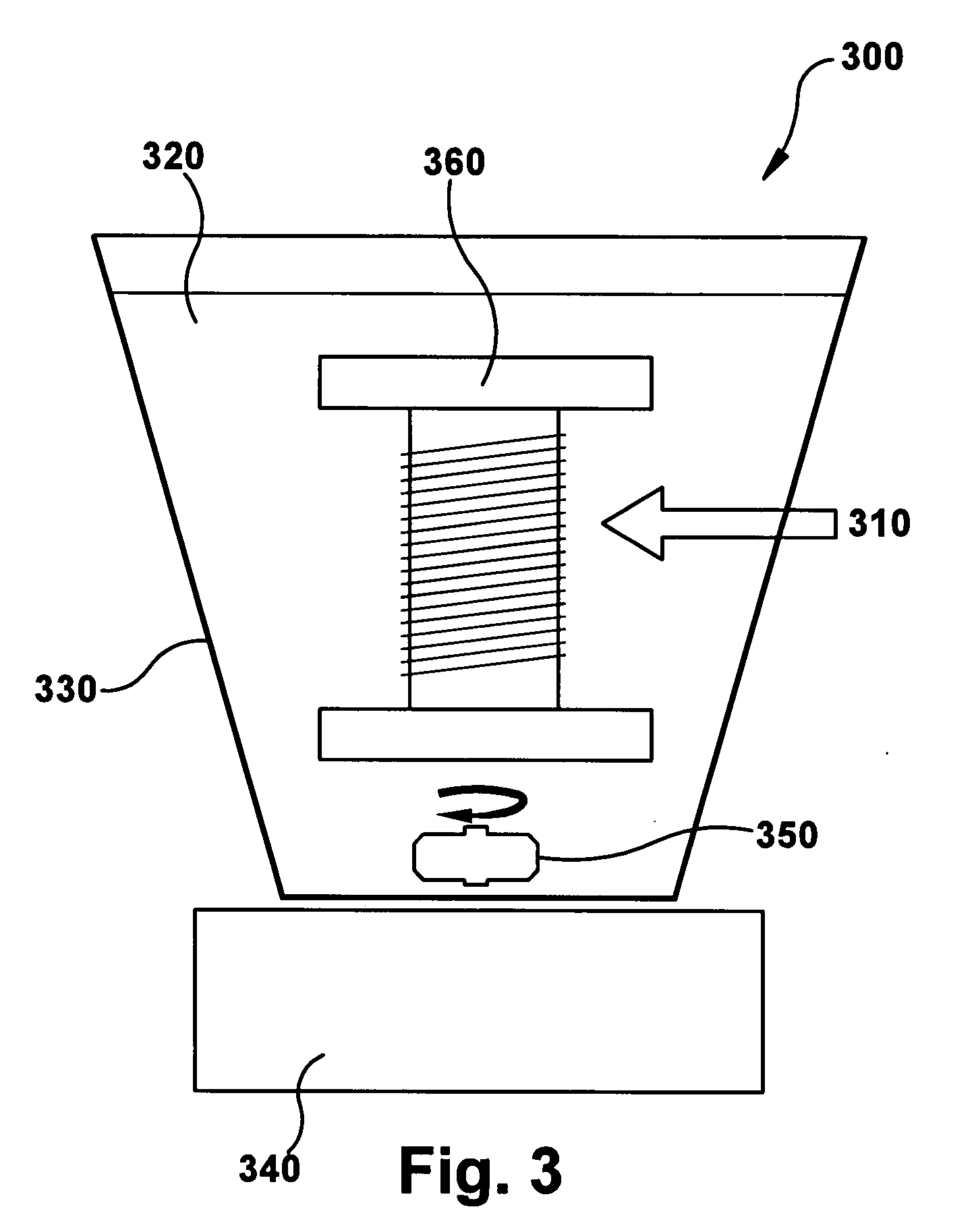Method and etchant for removing glass-coating from metal wires
a metal wire and glass coating technology, applied in the direction of surface treatment compositions, cable/conductor manufacturing, chemistry apparatus and processes, etc., can solve the problems of difficult to avoid etching and pitting the metal core, the surface of the etched and pitted metal core is not smooth and the diameter of the etched and pitted metal core is not uniform, and the dissolution process cannot be well controlled
- Summary
- Abstract
- Description
- Claims
- Application Information
AI Technical Summary
Benefits of technology
Problems solved by technology
Method used
Image
Examples
Embodiment Construction
[0012]One aspect of the invention relates to a process by which a glass-coated wire is exposed to an acid solution. In one example, the glass-coated wire is a microwire, and is introduced in the acid bath in a discrete batch, exposed to the solution for a specified time, and then removed and rinsed. In another example, the glass-coated wire is continuously drawn on an arrangement of spools and pulleys through an acid-solution bath, out of the solution, and through a rinse bath. In this example, the rate of motion of the spools and the size of the baths determine the exposure time. One example of a process is the reduction in the thickness of the glass coating at a defined rate of removal, with the end result being the removal, either full removal or partial removal, of the glass coating from the metal substrate or core. Hereinafter, removal of the insulating coating will be understood to include full or partial removal.
[0013]The wire can be formed of a metal alloy containing one or ...
PUM
| Property | Measurement | Unit |
|---|---|---|
| time | aaaaa | aaaaa |
| grain size | aaaaa | aaaaa |
| diameters | aaaaa | aaaaa |
Abstract
Description
Claims
Application Information
 Login to View More
Login to View More - R&D
- Intellectual Property
- Life Sciences
- Materials
- Tech Scout
- Unparalleled Data Quality
- Higher Quality Content
- 60% Fewer Hallucinations
Browse by: Latest US Patents, China's latest patents, Technical Efficacy Thesaurus, Application Domain, Technology Topic, Popular Technical Reports.
© 2025 PatSnap. All rights reserved.Legal|Privacy policy|Modern Slavery Act Transparency Statement|Sitemap|About US| Contact US: help@patsnap.com



